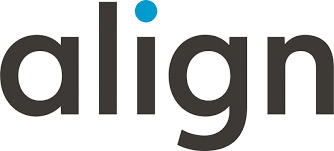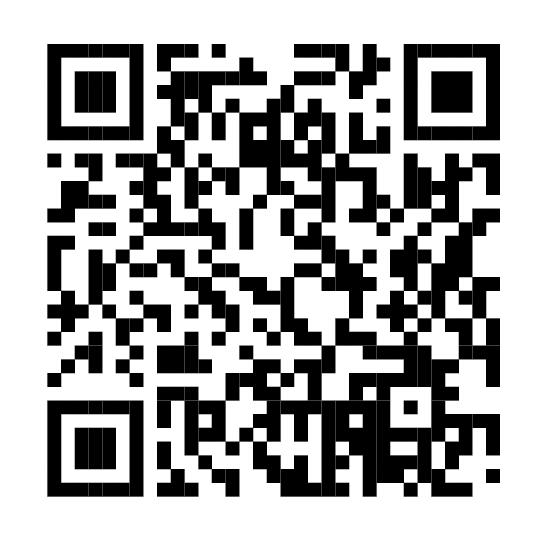Abstract
Dental intraoral scanners were once seen as high-tech gizmos for dentists focused on same-day crowns. Today, these scanners are far more versatile and are being used in a wide range of clinical applications. However, the technology can also be used as a diagnostic tool and as the hub for educating patients about their oral health and clinical diagnoses.
Learning Objectives
- Understand the role technology can play in communicating with patients
- Gain an appreciation for the various applications of intraoral scanners
- Learn how digital impressions can be used to educate patients
- Comprehend how intraoral scanning can be worked into regular practice workflows
I have seen a lot of change in dentistry in my lifetime. In a way, it’s sort of funny that I became fascinated with dental technology, because my childhood dentist was anything but interested in upgrades. I decided to become a dentist at the age of 3, and that family doctor was very encouraging—but his office was a throwback. He worked alone, using a stand-up Ritter unit that used a belt-driven handpiece. Although the high-speed handpiece was invented in the 1940s, he didn’t bring it onboard until I was a teenager.
Remember when the idea of patient education and codiagnosis was handing a patient a mirror and pointing at things in their mouth with the explorer? Or holding a bitewing radiograph against a view box and trying to show where that little triangle was? A lot of you reading this probably don’t remember that, and trust me when I tell you that you are lucky.
Seeing is Believing
We are visual creatures; we greatly depend on our eyes for nearly everything. There is an old saying, “I hear, I forget. I see, I remember. I do, I understand.” That saying is especially true when trying to explain something to an individual with minimal experience in the subject you are discussing.
My tech journey in dentistry began with an intraoral camera. My father, who was not in health care, happened to be with me the day I first saw an intraoral camera, and it was his influence that caused me to buy it. At that point in time, the camera was a wand attached to a huge box and cathode-ray tube monitor. It was on a large bulky cart that had to be wheeled into the operatory every time I wanted to use it, and it took approximately a minute to boot up.
Personally, I didn’t see the need to show patients their teeth on a screen. However, my father gave me a great explanation. “You see teeth all the time. You see them in books, magazines, and at seminars. You are used to seeing them. I have never seen the inside of my own mouth before, and all your patients are just like me. If your patients get a chance to see their problems, they will understand those problems and make better decisions. This thing will pay for itself.” The system cost me $15,500, and my dad was right; it paid for itself in no time.
As I began showing patients why they needed the treatment I was diagnosing, they could see and understand. And like my father, they were fascinated by the pictures and the tech that made them possible. Not only did patients more readily schedule needed treatment, but they also told their friends about this “amazing camera on a stick” that their dentist was using. This drove referrals to my office, as I was the only one in the area that had one.
The Advantages of 3D
Obviously, imaging has changed our profession. In addition to showing patients photos on a monitor, we also began showing radiographs on a monitor. We were using filters and enhancements in the radiography software to help the patient see decay and to truly understand radiographs. However, the drawback to any of those images was that you could only see height and width. Those images—although they were amazing and great for education—showed only 2 dimensions. Like Mario running across the screen in the original Nintendo Entertainment System, there was no depth—only up and down, left and right.
That’s why I have been such a cheerleader for 3D in our profession. We are not treatment planning or educating Flat Stanley. Our patients and our treatment are 3D, and we can only truly do our best when we are working in all 3 dimensions. That is why my office is now using CBCT, 3D impressions/scanning, 3D printing, and a dental lab mill. We changed standard operating procedures for our hygiene department, and we are routinely scanning as part of a patient hygiene/recare visit. We are currently taking these scans once per year as part of the patient recare process.
Previously, our hygienists took lots of photos, both intraoral and extraoral, and used those as well as routine diagnostic radiographs to inform and educate our patients. Now the 3D intraoral scan is part of that codiagnostic process. We position the scanner screen so the patients can see it and follow along as the scan is taken. This further involves the patient in the process, and it gives the hygienist the opportunity to show off the tech, as the patient can watch their teeth show up on the screen as the wand is passed over the dentition.
There are a couple reasons why we decided to make this change. The most important part is that despite all our efforts with our patients, we were educating them in 2D. Even simple things such as wear facets are harder to see in a flat photo, but when you can take a digital model and rotate it on the screen so that the patient can get the same perspective as the dental professional, the impact is immediate.
The second reason is for tracking and history. Some scanners have a feature that allows the team to show a video of wear and shifting of the teeth over time. We all have patients who have a hard time believing us when we tell them they are clenching and grinding. It’s hard to deny it when faced with objective video evidence.
Driving the Conversation
As my dad so astutely pointed out all those years ago, patients who are better informed make better health care decisions. Although in the past patients were fascinated by seeing pictures of their teeth on the monitor, now they are practically hypnotized by watching their teeth show up on the monitor live, as the scan is being taken.
Then when the scan is completed and the hygienist begins to rotate the scan on the screen, zooming in and out and showing different aspects of the patient’s arches, the most common reaction is fascination. When I come in to do the examination, the scan will often be the first thing the patient mentions. I routinely say, “I get to see these scans every day, and yet I am still stunned by how incredibly cool they are.”
Our particular system even has caries detection through near infrared imaging that works as a type of transillumination that helps us find or verify areas of decay. We can then either treat or monitor, depending on the lesion size and the office philosophy.
These scans are such amazing tools to use. We explain that even if their mouth is in perfect shape, we still have this data in the cloud, so if they should ever break a tooth or have something else unexpected happen, we now have an exact digital replica of them that we can use when designing the solution to whatever problems they may face.
Catapult Education, LLC is an ADA CERP Recognized Provider. ADA CERP is a service of the American Dental Association to assist dental professionals in identifying quality providers of continuing dental education. ADA CERP does not approve or endorse individual courses or instructors, nor does it imply acceptance of credit hours by boards of dentistry.
Approved PACE Program Provider. FAGD/MAGD Credit. Approval does not imply acceptance by a state or provincial board of dentistry or AGD endorsement. 6/1/20 to 5/31/24. Provider ID 306446.
Catapult Education designates this continuing education activity for 1/4 credit.
Sponsored by:
Online Quiz
For more info on this activity, or to take the quiz and obtain your continuing education credit follow the link from the QR code or visit www.catapulteducation.com/course/intraoral-scanners
We demonstrate how the scan can show occlusion in color, then explain that we can also use the scan to simulate orthodontic outcomes with clear aligners. Sometimes when we discuss treatment possibilities and options, patients will want to think it over and/or discuss it with their significant other. We always make the point to them that the data is here and will always be here, so if they want an occlusal appliance, orthodontics, or an appliance to help with their obstructive sleep apnea, we can get them started without a second office visit.
We routinely get patient feedback along the lines of, “this is the coolest thing I’ve ever seen,” or “I can’t believe you just slide that thing over my teeth and then my mouth is on the screen.”
Simplifying the Treatment
For the past few years, the profession has heard the term “digital workflow” repeatedly. What started out as a technology term was rapidly assimilated into a marketing term. Something like digital radiography, which had been mainstream for over a decade, was suddenly marketed as a digital workflow. Although this was true, the overuse eventually watered down the definition. The overuse of the term rapidly led to confusion amongst practitioners as to what the term really meant. Now, I feel comfortable telling you that intraoral scanners truly do create the mythological beast called digital workflow.
Pairing the scanner with other hardware in the office allows us to take cases from start to finish while doing all the processes on a screen. Often, the only part of the process that is analogue is prepping the tooth.
Let’s use a crown as an example. The patient has had an intraoral scan as part of their hygiene visit. Once the preparation is completed, the postoperative prep scan is done. Once the prep scan is completed, that scan is the basis of designing the prosthetic crown. If we wish to exactly replicate the tooth as it was preoperatively (perhaps it is used for a clasp on a removable partial denture), then the preoperative scan is used so that the design combines those 2 scans and creates a prosthesis that is identical to the original.
The workflow is as follows:
- Digital preoperative scan
- Digital postoperative scan
- Scans imported and used in digital design software
- Digital design software creates file of final prosthesis
- Digital design file is sent to mill
- Mill creates final permanent prosthesis
That workflow could also be used to design an occlusal guard or other types of appliances/protheses that are then either milled or printed on an in-office 3D printer. These cases can be created same day, next day, or just in time, depending on available time and the schedule.
Conclusions
Intraoral 3D scanners are making tremendous inroads into the dental profession. They were once considered as a way to reduce the number of analogue impressions and increase patient acceptance. However, intraoral scanners have now become an intrinsic piece of the restorative armamentarium.
Time-saving procedures, such as same-day prosthetic treatment, are dependent on scanners to create the digital files used in the design and fabrication process. The profession is now seeing these devices as not only nice to have but also a need to have, as scanners have become the key to unlocking a vast treasure of digital dental services.




